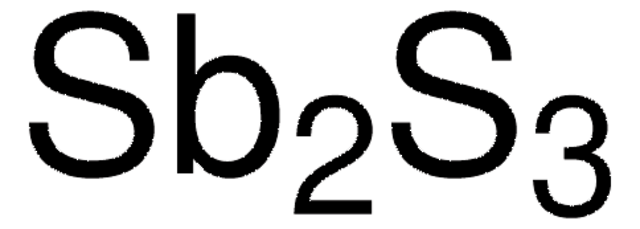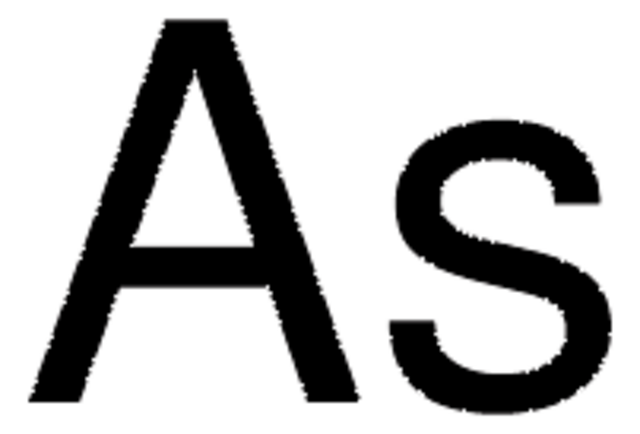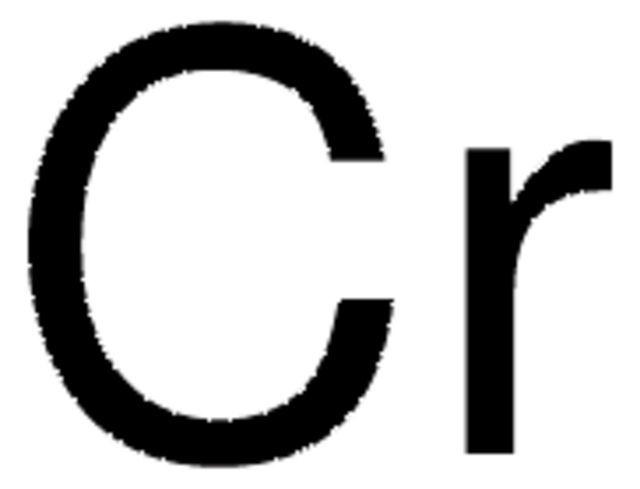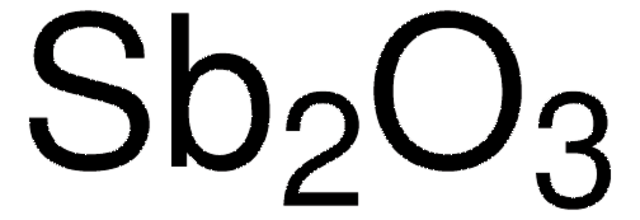Wichtige Dokumente
266329
Antimon
powder, -100 mesh, 99.5% trace metals basis
Synonym(e):
Antimony black, Antimony element
About This Item
Empfohlene Produkte
Assay
99.5% trace metals basis
Form
powder
Widerstand
41.7 μΩ-cm
Partikelgröße
-100 mesh
bp
1635 °C (lit.)
mp (Schmelzpunkt)
630 °C (lit.)
Dichte
6.69 g/mL at 25 °C (lit.)
SMILES String
[Sb]
InChI
1S/Sb
InChIKey
WATWJIUSRGPENY-UHFFFAOYSA-N
Suchen Sie nach ähnlichen Produkten? Aufrufen Leitfaden zum Produktvergleich
Signalwort
Warning
H-Sätze
Gefahreneinstufungen
Carc. 2 - STOT RE 2 Inhalation
Zielorgane
Lungs
Lagerklassenschlüssel
6.1D - Non-combustible acute toxic Cat.3 / toxic hazardous materials or hazardous materials causing chronic effects
WGK
WGK 3
Flammpunkt (°F)
Not applicable
Flammpunkt (°C)
Not applicable
Persönliche Schutzausrüstung
Gloves
Hier finden Sie alle aktuellen Versionen:
Besitzen Sie dieses Produkt bereits?
In der Dokumentenbibliothek finden Sie die Dokumentation zu den Produkten, die Sie kürzlich erworben haben.
Kunden haben sich ebenfalls angesehen
Unser Team von Wissenschaftlern verfügt über Erfahrung in allen Forschungsbereichen einschließlich Life Science, Materialwissenschaften, chemischer Synthese, Chromatographie, Analytik und vielen mehr..
Setzen Sie sich mit dem technischen Dienst in Verbindung.




